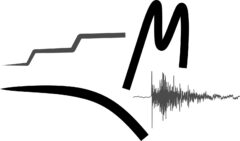The project is particularly original and innovative in several aspects.
– First, we are studying the large earthquake distribution, not in the earthquake data only, but in their imprint in the cumulative, permanent deformation of the coastal zone above the subduction zone. This raises the idea that the distribution of past large megathrust earthquakes at depth control the coastal morphology. Conversely, the way coastal uplifts and deformations vary along the coast highlight which segments of subduction below are prone to rupture in forthcoming large earthquakes, and which segments should not produce any significant event and even possibly arrest the neighboring large earthquakes. We thus propose to study the variability in the long-term uplift of the coastal zone as a proxy to delineate the segments of subduction most prone to rupture in the future. This approach is original and hence challenging.
– Second, we provide evidence, and follow a line that suggests that conceptual models used so far to analyze the megathrust and earthquakes are inappropriate on some fundamental aspects. Common models indeed consider faults as simple planes embedded in an elastic medium. We propose an alternative vision to the classical elastic model, where both seismic and aseismic deformations are involved in the permanent deformation observed above the megathrust. The sum of the cyclic deformation over many seismic cycles account for the long-term cumulated deformation of the upper plate. This implies that an elasto-plastic model would be more realistic.
– A third original aspect is that the first observations we have already acquired along the Andean subduction zone reveal a counter-intuitive relation between megathrust earthquakes, interseismic coupling and permanent deformations in the upper plate (Saillard et al., 2017). These preliminary observations confirm that the permanent deformation recorded in the coastal zone is linked to the seismic behavior of the megathrust, and additionally suggest that aseismic slip – not coseismic slip, is responsible for the largest deformation in the upper plate. This is an innovative and provocative proposition that we examine in our project.
Finally, a last originality lies in the main object of the study, the marine terraces. It is the first time that marine terraces are analyzed and dated extensively along the Northern Andean subduction zone. Marine terraces are a 4D morpho-tectonic marker. They can thus extend our observation time window over long ranges (up to 1 million of years), while they cover large areas, providing information on broad scale ranges as they formed over many seismic cycles.
